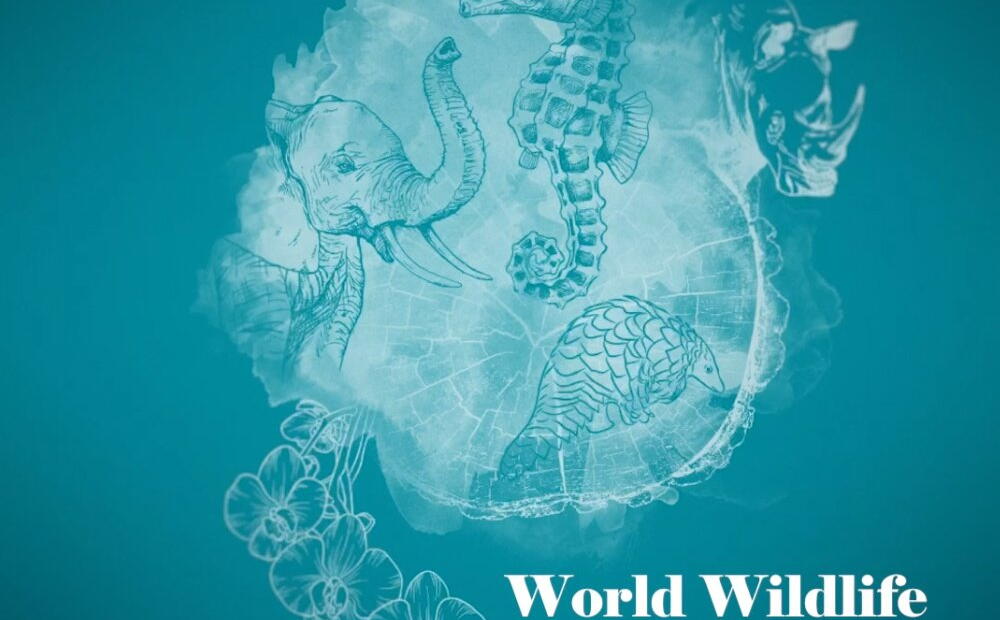Launch of the World Wildlife Crime Report 2024: New data, trends, threats and possible solutions to combat illegal wildlife trade
Vienna, 14 May 2024
The World Wildlife Crime Report 2024 was launched yesterday by the United Nations Office on Drugs and Crime (UNODC) in Vienna, Austria. This is the third report in a series following the 2020 and 2016 publications.
The report provides an updated focus on trends in the illegal trade in wildlife species listed in the Convention on International Trade in Endangered Species of Wild Fauna and Flora (CITES). It presents a systematic analysis of wildlife crime harms and impacts, probes the factors driving wildlife trafficking trends, and takes stock of current knowledge about the effectiveness of the different types of interventions being pursued to resolve wildlife crime.
CITES Secretary-General Ivonne Higuero, in congratulating UNODC and all those involved in the launch of the report, remarked: “World Wildlife Crime Reports are uniquely insightful and are a powerful tool to inform responses to the devastating consequences of wildlife crime. Data-driven research is crucial and forms a strong foundation for policymaking. This research drives factual decision-making, and targeted interventions to combat this global threat that affects people and planet.”
New emphasis in this edition is placed on the assessment of the causes and impacts of wildlife trafficking and associated crime at a global level. The findings of the report reinforce a critical message that the factors driving trafficking from source to end markets vary enormously between different illicit wildlife commodity sectors. It stresses the importance of using solutions which can be tailored and the potential for ongoing wildlife crime research to assist these efforts by gaining insights into criminal structures, financial incentives and evolving demand patterns of trafficking chains.
The seizure data in the report documents illegal trade in 162 countries and territories during 2015–2021, which impacted around 4,000 plant and animal species—3,250 of which are listed in the CITES Appendices. In many cases, illegal trade appeared to have contributed to local or global extinctions of species, disrupted ecosystems, and undermined the many socioeconomic benefits that people derive from nature. Case studies on specimens of species affected by illegal wildlife trade were included for live orchids, dried seahorses, rosewood timber, African elephant ivory, African rhinoceros horn and pangolin scales.
The data in the report is largely derived from the available national annual illegal trade reports, which CITES Parties are required to submit each year. This data is included in the CITES Illegal Trade Database and hosted by UNODC on behalf of the CITES Secretariat. The dissemination platform for the database allows illegal trade data to become an accessible and valuable resource for CITES Parties, who use the data to guide their decision-making and support the development of targeted and evidence-based responses to combat wildlife crime.
CITES plays a crucial role in combating wildlife crime as the primary legal framework for regulating international trade in specimens of wild animals and plants listed in the CITES Appendices. CITES works closely with UNODC, along with INTERPOL, the World Customs Organization (WCO) and the World Bank Group, as part of the International Consortium on Combating Wildlife Crime (ICCWC). ICCWC works to strengthen criminal justice systems and provide coordinated support at the national, regional and international level. The World Wildlife Crime Report 2024 will be an important resource in the work of ICCWC and for CITES Parties globally and will inform global research and analysis studies undertaken by ICCWC.
Read the World Wildlife Crime Report 2024 here.
The recorded launch of the World Wildlife Crime Report 2020 can be watched here.
____________________________________
Editor’s Notes:
For media enquiries, please contact cites-media [at] un.org (cites-media[at]un[dot]org)
For general enquiries, please contact info [at] cites.org (info[at]cites[dot]org)
About CITES
The Convention on International Trade in Endangered Species of Wild Fauna and Flora (CITES) was signed on 3 March 1973 and entered into force on 1 July 1975. With 184 Parties (183 countries + the European Union), it remains one of the world's most powerful tools for wildlife conservation through the regulation of international trade in over 40,900 species of wild animals and plants. CITES-listed species are used by people around the world in their daily lives for food, health care, furniture, housing, tourist souvenirs, cosmetics or fashion. CITES seeks to ensure that international trade in such species is sustainable, legal and traceable and contributes to both the livelihoods of the communities that live closest to them and to national economies for a healthy planet and the prosperity of the people in support of UN Sustainable Development Goals.
Follow CITES on social media:
Find out more: https://cites.org/eng
About ICCWC
The International Consortium on Combating Wildlife Crime (ICCWC) is a unique partnership of five intergovernmental organizations to help law enforcement bring criminals engaged in wildlife crime to justice. Through technical assistance, tools, training, and operational support, ICCWC works along the entire criminal justice chain, building the capacity of frontline law enforcement in countries and regions around the world affected by wildlife crime. The ICCWC partners are the Secretariat of the Convention on International Trade in Endangered Species of Wild Fauna and Flora (CITES), the International Criminal Police Organization (INTERPOL), the United Nations Office on Drugs and Crime (UNODC), the World Bank Group (WBG) and the World Customs Organization (WCO).
Follow ICCWC on social media:
Find out more: www.iccwc-wildlifecrime.org



